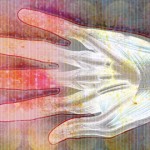NEW YORK (Reuters Health)—About 15% of women who develop carpal tunnel syndrome (CTS) while pregnant will suffer persistent and worsening symptoms long after delivery, a new study suggests. “Conventional medical wisdom has been that gestational carpal tunnel syndrome simply goes away after pregnancy, and for many women this is true. However, in our practice this…
Search results for: carpal tunnel syndrome

Using Ultrasound to Diagnose Carpal Tunnel Syndrome
Note: Updated May 2, 2018, to correct a link in the reference section. The error was introduced in editing. A 44-year-old Caucasian woman presented to the outpatient rheumatology clinic that had followed her for several years for rheumatoid arthritis. She was compliant with her regimen of hydroxychloroquine, etanercept and salsalate. Her chief complaint was worsening…

Patients with Parkinson’s Disease Are at Risk for Carpal Tunnel Syndrome
Patients with Parkinson’s disease may be at risk of carpal tunnel syndrome (CTS). New research examined why patients with Parkinson’s have a higher incidence of CTS than that of the general population. The study found that those patients who underwent subthalamic nucleus deep brain stimulation to monitor them for neuropathy may develop CTS…

Carpal Tunnel Syndrome: Is Post-Surgical Rehabilitation Helpful?
A recent research review compared the results of various studies on rehabilitation treatments, including immobilization, exercise and cold therapy, for patients with carpal tunnel syndrome after surgery. The authors concluded that little evidence supports the effectiveness of rehabilitation techniques, and many of the studies reviewed have similar limitations…

Do Bisphosphonates Increase Risk of Carpal Tunnel Syndrome?
In a large-scale study, researchers demonstrated that the use of bisphosphonates in postmenopausal women is associated with an increased risk of carpal tunnel syndrome, in addition to other known risks (e.g., incapacitating bone, joint and/or musculoskeletal pain, and osteonecrosis of the jaw)…
Patients with Non-Classic Carpal Tunnel Syndrome Can Benefit from Surgery
Patients with extra-median spread of CTS symptoms had similar post-surgical outcomes as patients with classic CTS
Patient Fact Sheet: Carpal Tunnel Syndrome
Carpal tunnel syndrome is possibly the most common nerve disorder experienced today. The carpal tunnel is located at the wrist on the palm side of the hand just beneath the skin surface (palmar surface). Eight small wrist bones form three sides of the tunnel, giving rise to the name carpal tunnel. The remaining side of the tunnel, the palmar surface, is composed of soft tissues, consisting mainly of a ligament called the transverse carpal ligament. This ligament stretches over the top of the tunnel.
Carpal Tunnel Syndrome
Carpal tunnel syndrome (CTS) is possibly the most common nerve disorder experienced today. It affects 3% to 7% of the population and is usually treatable. Middle-age and older individuals are more likely to develop CTS than younger people, and women develop CTS three times more frequently than men.

Central Sensitization to Pain May Not Predict Long-Term Outcomes after Carpal Tunnel Release Surgery
Pain sensitization, such as that experienced by patients with carpal tunnel syndrome (CTS), has been associated with poorer clinical outcomes after surgery. New research has found that, although pain sensitization in CTS patients correlates with preoperative symptom severity, CTS symptoms did not have a persistent effect on functional outcomes after surgery…
Give Rheumatology Patients a Helping Hand
Nearly 10 million Americans suffer from carpal tunnel syndrome, a condition that disables a key nerve in the wrist resulting in numbness, tingling, weakness, and loss of function in the hands and wrist. These symptoms are similar to those of rheumatoid arthritis and other rheumatic conditions, and it is important that patients know the difference.
- 1
- 2
- 3
- …
- 5
- Next Page »